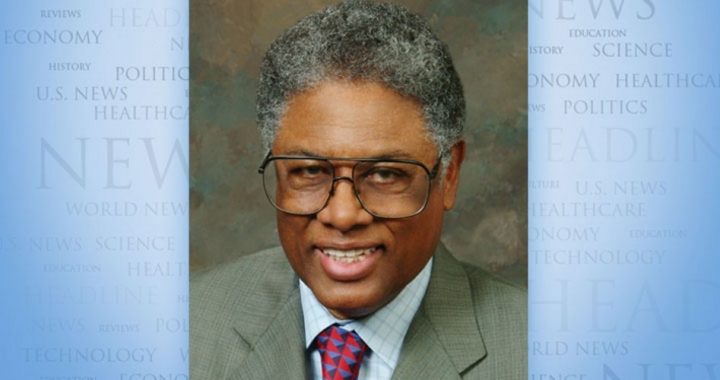
When I first saw a book with the title, White Girl Bleed a Lot by Colin Flaherty, I instantly knew what it was about, even though I had not seen the book reviewed anywhere, and knew nothing about the author.
That is because I had encountered that phrase before, while doing research for the four new chapters on intellectuals and race that I added to the revised edition of my own book, Intellectuals and Society, published this year.
That phrase was spoken by a member of a mob of young blacks who attacked whites at random at a Fourth of July celebration in Milwaukee last year. What I was appalled to learn, in the course of my research, was that such race riots have occurred in other cities across the United States in recent years — and that the national mainstream media usually ignore these riots.
Where the violence is too widespread and too widely known locally to be ignored, both the local media and public officials often describe what happened as unspecified “young people” attacking unspecified victims for unspecified reasons. But videos of the attacks often reveal both the racial nature of these attacks and the racial hostility expressed by the attackers.
Are race riots not news?
Ignoring racial violence only guarantees that it will get worse. The Chicago Tribune has publicly rationalized its filtering out of any racial identification of attackers and their victims, even though the media do not hesitate to mention race when decrying statistical disparities in arrest or imprisonment rates.
Such mob attacks have become so frequent in Chicago that officials promoting conventions there have recently complained to the mayor that the city is going to lose business if such widespread violence is not brought under control.
But neither these officials nor the mayor nor most of the media use that four-letter word, “race.” It would not be politically correct or politically convenient in an election year.
Reading Colin Flaherty’s book made painfully clear to me that the magnitude of this problem is even greater than I had discovered from my own research. He documents both the race riots and the media and political evasions in dozens of cities across America.
Flaherty’s previous writings have won him praise and awards, but this book has been met largely with silence or abuse. However much ignoring the ugly realities that his book reveals may serve the interests of the media or politicians, a cover-up is a huge disservice to everyone else — whether black, white or whatever.
Even the young hoodlums who launch these mass attacks on strangers would be better off to be stopped now, rather than continue on a path of escalating violence that can lead to a lifetime behind bars or to the execution chamber.
The dangers to the nation as a whole are an even bigger problem. The truth has a way of eventually coming out, in spite of media silence and politicians’ spin. If the truth becomes widely known, and a white backlash follows, turning one-way race riots into two-way race riots, then a cycle of revenge and counter-revenge can spiral out of control, as has already happened in too many other countries around the world.
Most blacks and most whites in the United States today get along with each other. But what is chilling is how often in history racial or ethnic groups that co-existed peacefully for generations — often as neighbors — have suddenly turned on each other with lethal violence.
In the middle of the 20th century, Sri Lanka had a level of mutual respect and even friendship between its majority and minority communities that was rightly held up to the world as a model. Yet this situation degenerated over the years into polarization and violence that escalated into a civil war that lasted for decades, with unspeakable atrocities on both sides.
All it took were clever demagogues and gullible followers. We already have both. What it will take to nip in the bud the small but widely spreading race riots will be some serious leadership in many quarters and that rarest of all things in politics, honesty.
Race hustlers and mob inciters like Al Sharpton represent such polarizing forces in America today. Yet Sharpton has become a White House adviser, and Attorney General Eric Holder has been photographed literally embracing him.
Thomas Sowell is a senior fellow at the Hoover Institution, Stanford University, Stanford, CA 94305. His website is www.tsowell.com. To find out more about Thomas Sowell and read features by other Creators Syndicate columnists and cartoonists, visit the Creators Syndicate Web page at www.creators.com.
COPYRIGHT 2012 CREATORS.COM



